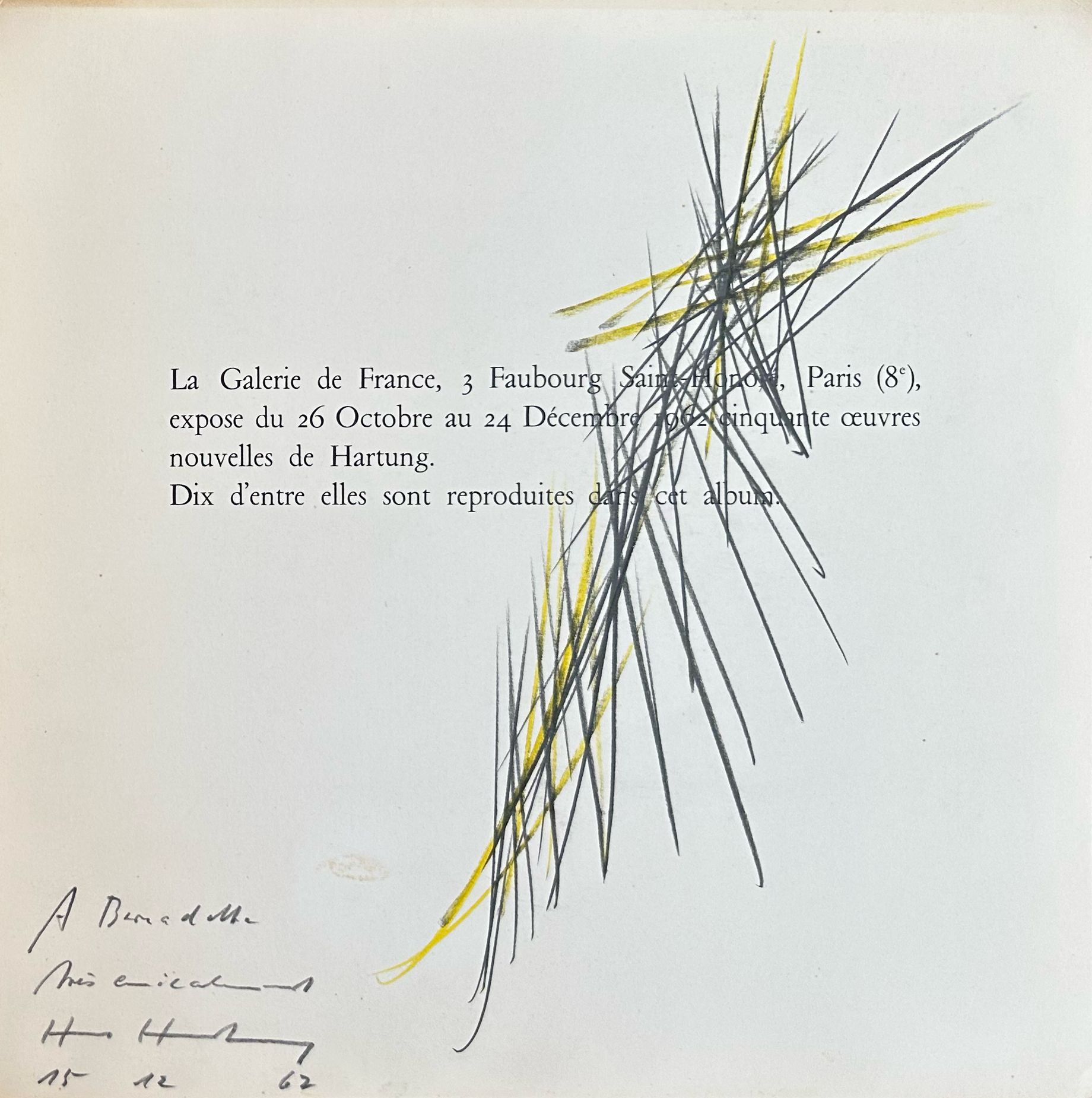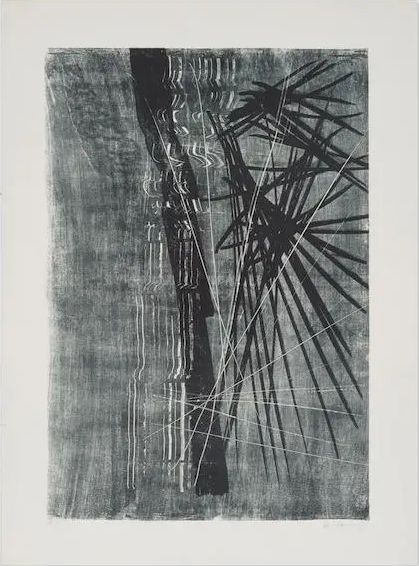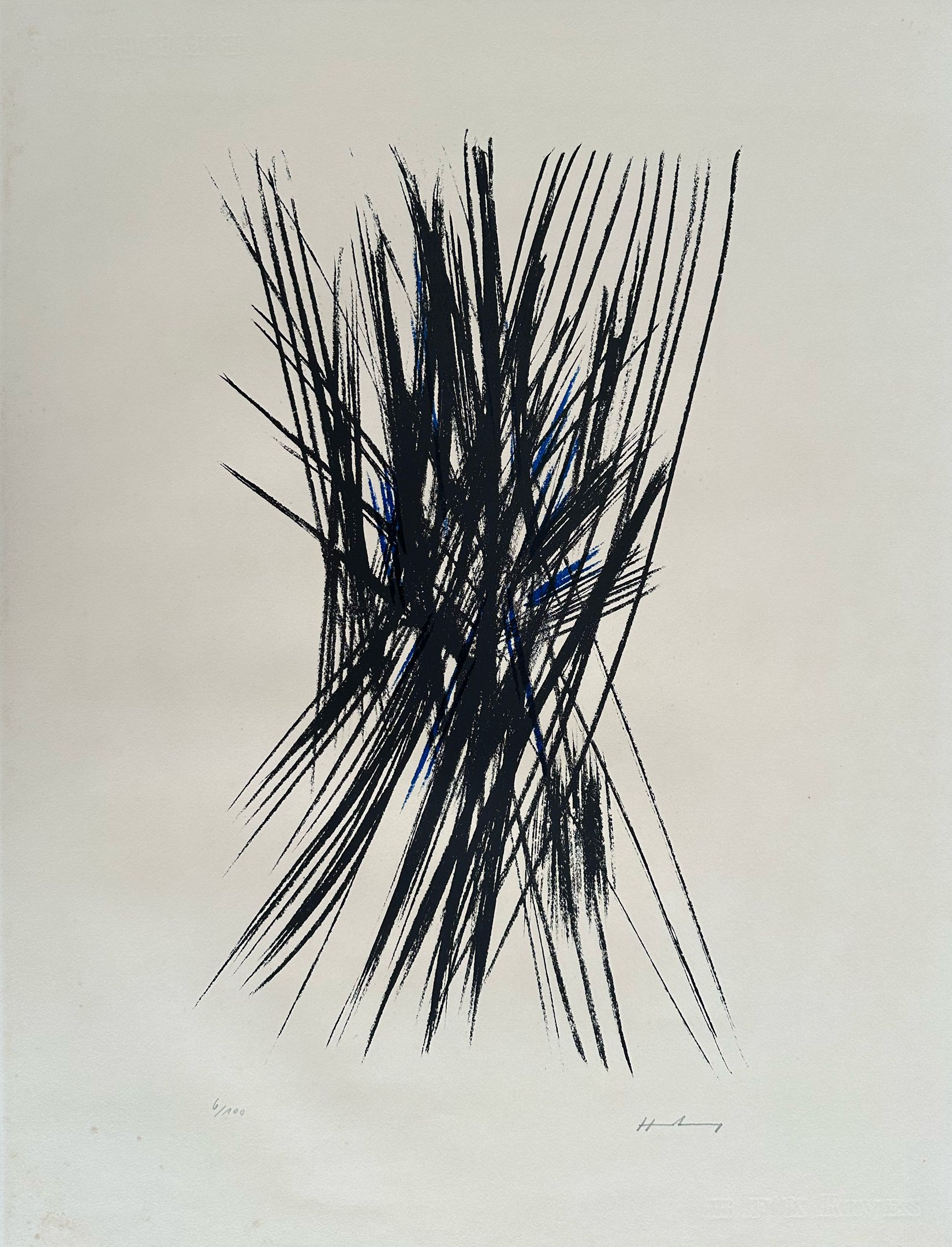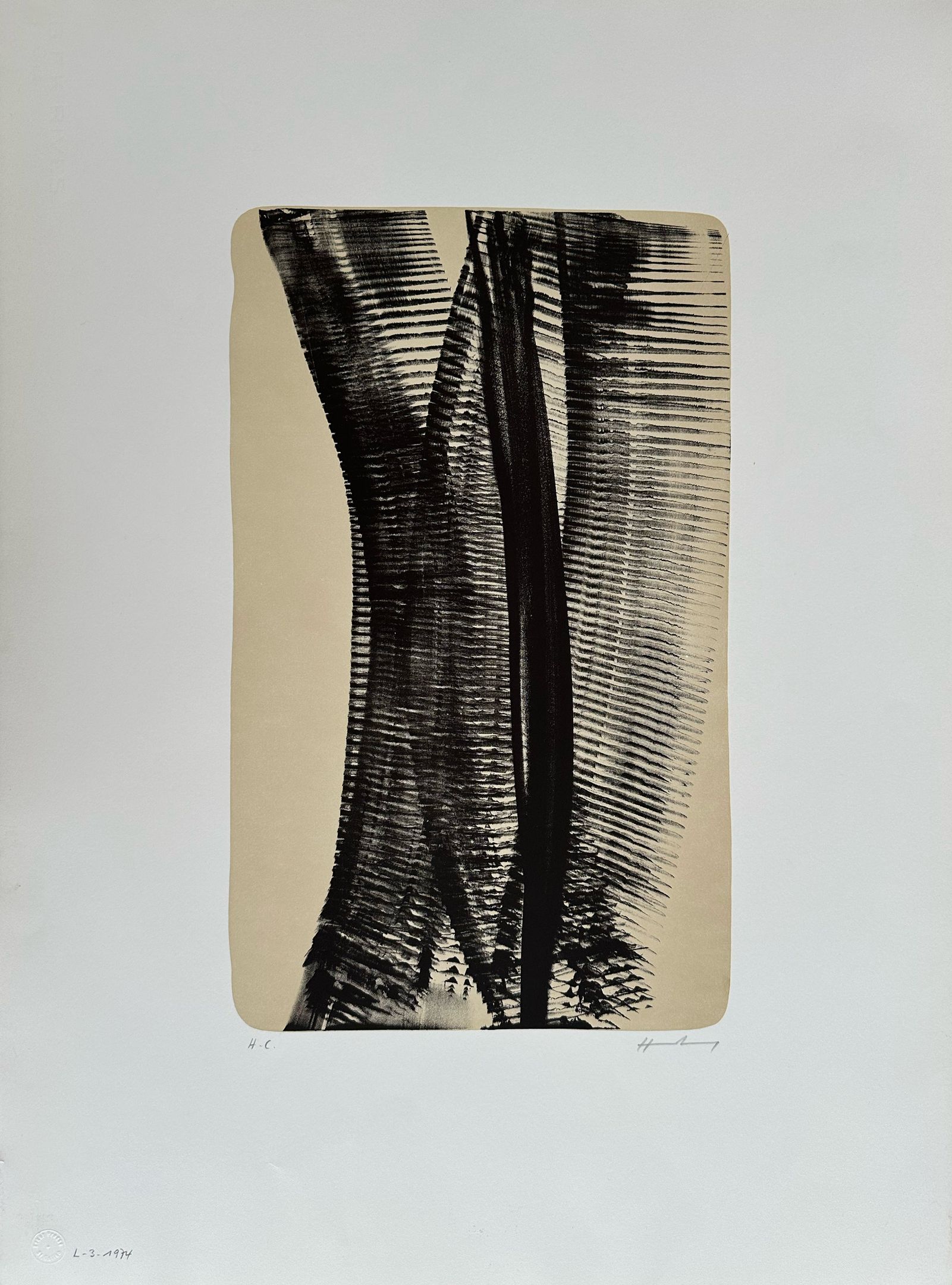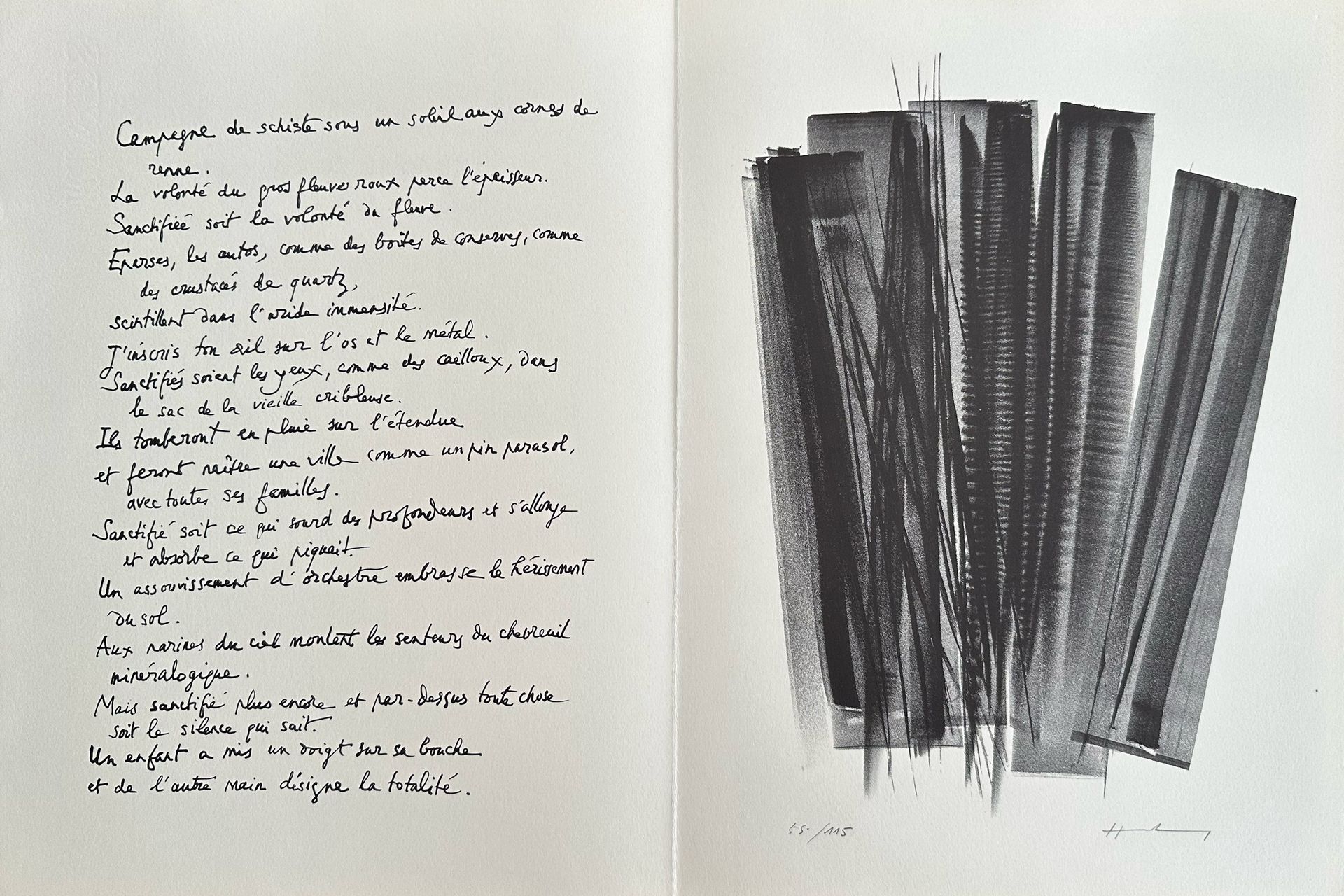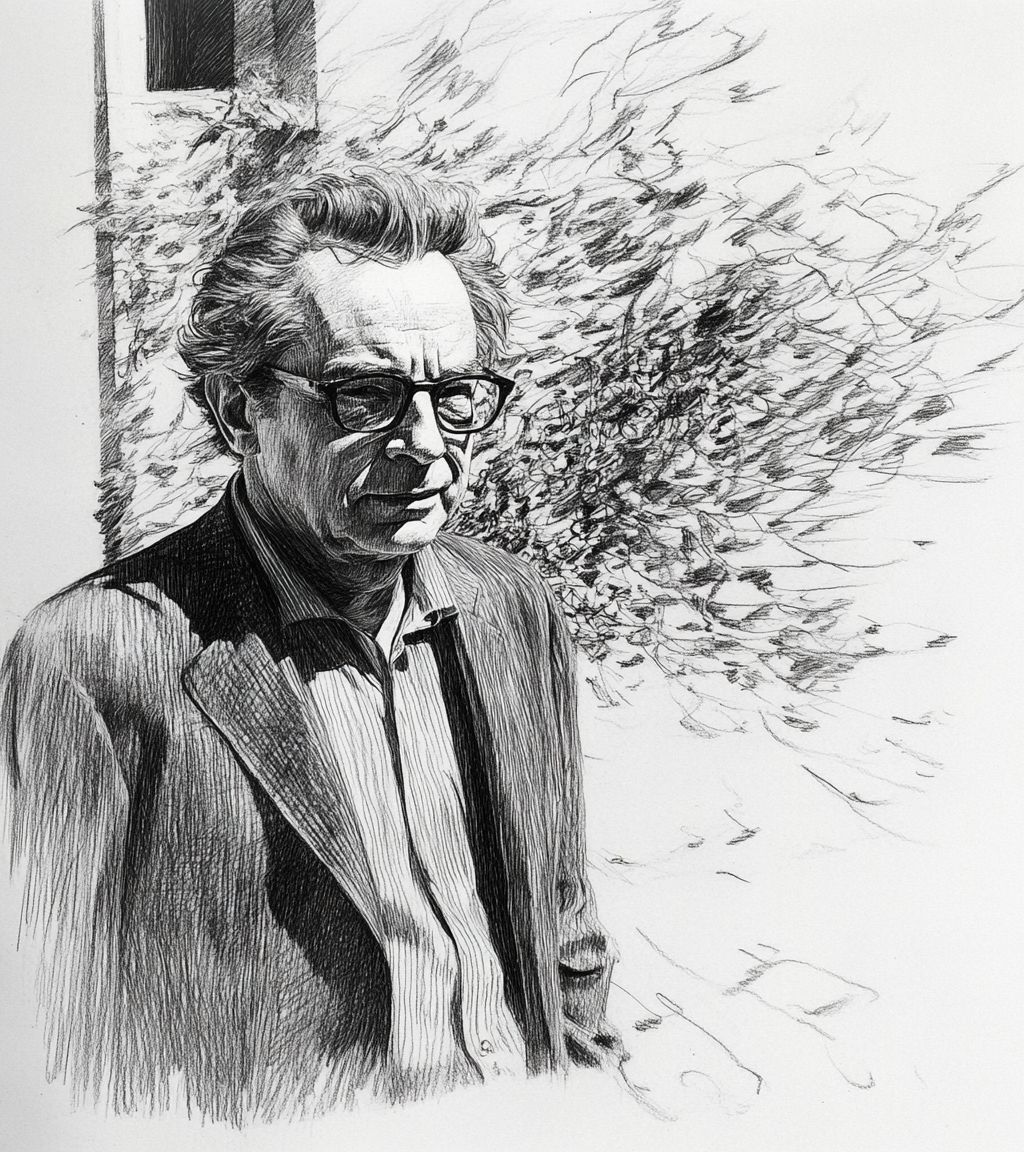
Hans Hartung
Hans Hartung studied philosophy and art history at Leipzig University and received formal artistic training at the academies of Dresden and Munich. After traveling through Italy and Spain, he settled permanently in Paris in 1935. Hartung played a key role in postwar European abstraction, emerging as a pioneer of Art Informel and a major figure of the lyrical abstraction movement.
Hartung is best known for his gestural abstract paintings, marked by dynamic brushstrokes, scratches, and graphic lines that appear both spontaneous and deliberate. His early works employed limited color palettes and expressive linework, while later paintings introduced vibrant acrylics and experimental techniques like spraying, scratching, and using custom-made tools. These methods allowed him to emphasize energy, rhythm, and emotion while maintaining formal control. Hartung’s style bridges the European tachisme movement and abstract expressionism, making him a key figure in the global development of gestural abstraction.
Hartung represented France at the Venice Biennale. His work was also featured in several editions of Documenta. A major retrospective of his career was held at the Musée d’Art Moderne de Paris in 2019, the first of its kind in Paris in over five decades. Other notable exhibitions have taken place at Kunstmuseum Bonn, Museum Ludwig (Cologne), and the Museum für Gegenwartskunst in Siegen. His legacy is preserved and promoted by the Hartung-Bergman Foundation in Antibes.
Collected by major institutions and notable private collectors:
— National Gallery of Art, Washington, D.C.— Tate
— Centre Pompidou
— Musée d’Art Moderne de Paris
Notable sales and auction records:
— T1956-13, EUR 2,6 million at Sotheby's, Paris, 2017— T2-1934, EUR 1,9 million at Artcurial, 2020
— T1956-8, EUR 1,5 million at Sotheby's, Paris, 2018
Artworks and Paintings
Biography and Artistic Career Highlights
Hans Hartung was born on September 21, 1904, in Leipzig, Germany, into the family of a physician. His childhood was spent in an intellectual and cultural environment, where he developed an early interest in painting and music. As a teenager, he showed a fascination with abstract forms and color experiments, copying works by Rembrandt and Goya while simultaneously searching for his own artistic language through drawing.
1922–1924 — studied at the Academy of Fine Arts in Leipzig, then in Dresden. Here he became acquainted with Expressionism and new currents in European art.
1926 — first trip to France and Italy, where he encountered Renaissance masterpieces and contemporary movements.
1928 — held his first solo exhibition in Dresden, where his interest in abstract compositions became evident.
1931 — married the painter Anna-Eva Bergman, with whom he shared an interest in artistic experimentation.
1932–1934 — emigrated to France, escaping increasing pressure on avant-garde art in Germany.
1935–1939 — lived in Paris, moving closer to Surrealist and abstractionist circles, working actively on linear compositions that would become the foundation of his style.
1944 — while serving in the French Resistance, he was severely wounded and lost a leg.
1945 — returned to artistic activity, continuing to experiment with large formats and energetic gestures.
1950s — gained recognition in the art world, participating in exhibitions including Documenta in Kassel (1955). His abstract paintings were distinguished by dynamic strokes, impulsive energy, and strong color contrasts.
1960 — represented France at the Venice Biennale, achieving international acclaim.
1960s–1970s — created series of works in which lines, strokes, and patches formed visual «explosions» of energy. His paintings were associated with Tachisme, the French variant of Abstract Expressionism.
1969 — elected president of the International Association of Plastic Arts at UNESCO.
1970s–1980s — developed new cycles of paintings while working in his studio in Antibes on the French Riviera. He actively used the airbrush and unconventional tools to produce unique pictorial effects.
1989 — awarded the Praemium Imperiale of Japan for his contribution to the visual arts.
On December 7, 1989, Hans Hartung died in Antibes, France. His legacy became an important part of European abstract art of the second half of the 20th century: he succeeded in combining gestural expression with a philosophical reflection on light, space, and energy.

